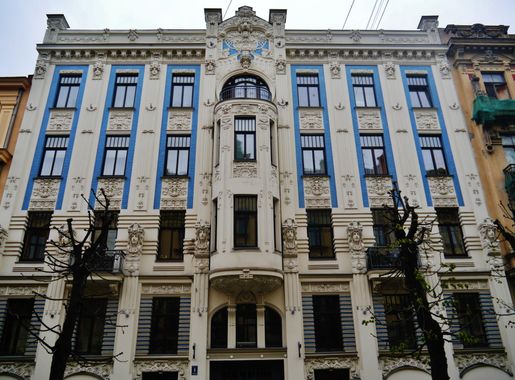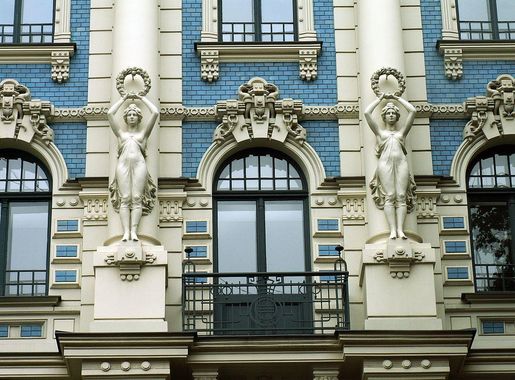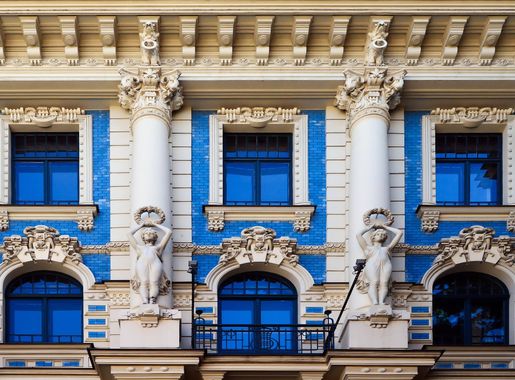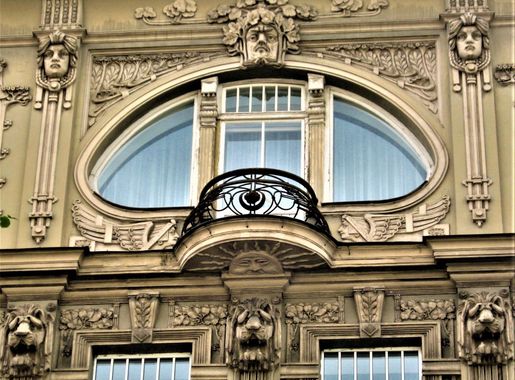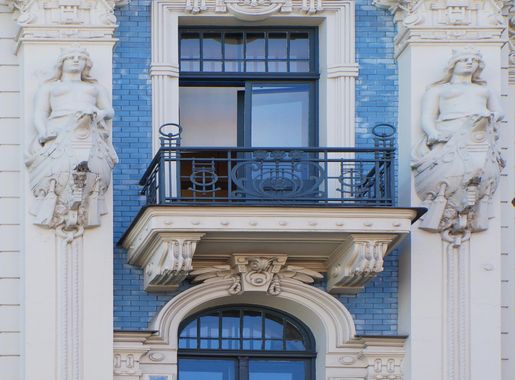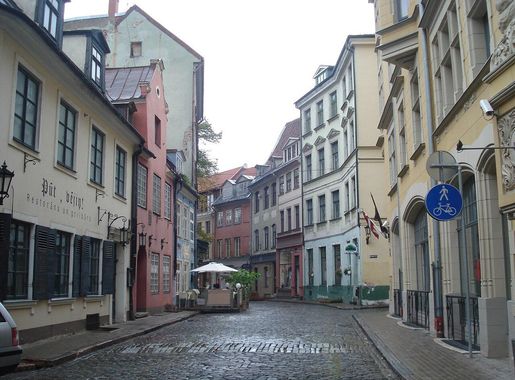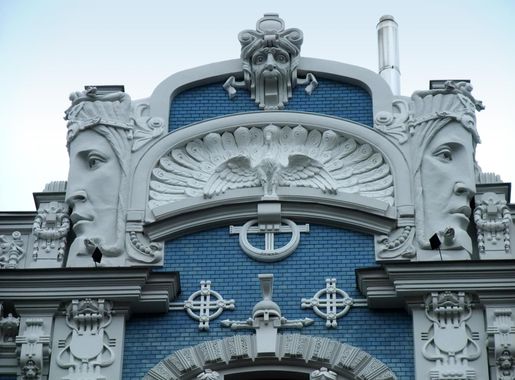
The Enchanting Art Nouveau District of Riga
Discover the Art Nouveau District in Riga, a treasure trove of architectural beauty, cultural richness, and historic charm in the heart of Latvia's capital.
The Art Nouveau District in Riga, Latvia, is a captivating blend of history, architecture, and culture, making it a must-visit destination for tourists. Located in the heart of the city, this district boasts the highest concentration of Art Nouveau buildings in the world, offering a visual feast of intricate designs, ornate facades, and whimsical motifs that transport visitors back to the early 20th century. Strolling through the leafy streets of Alberta iela and Elizabetes iela, you will be mesmerized by the stunning architectural masterpieces created by the likes of Mikhail Eisenstein and Konstantīns Pēkšēns. Each building tells a story through its unique facade, adorned with floral decorations, mythical creatures, and elegant sculptures. The district is not just about architecture; it is a vibrant area filled with charming cafes, boutique shops, and art galleries, offering a perfect blend of modern amenities and historic charm. The Art Nouveau Museum, located in a beautifully restored apartment, provides an immersive experience into the lifestyle and aesthetics of the era. With its authentic interiors, period furniture, and intricate details, the museum offers a fascinating glimpse into the past. Whether you are an architecture enthusiast or simply looking to explore a unique and picturesque part of Riga, the Art Nouveau District promises an unforgettable experience.
Local tips in Art Nouveau District
- Visit during the day to fully appreciate the intricate details of the buildings.
- Stop by the Art Nouveau Museum for an in-depth look at the era's lifestyle and design.
- Wear comfortable shoes as the best way to explore the district is on foot.
- Take a guided tour to learn more about the history and significance of the architecture.
- Don't miss Alberta iela and Elizabetes iela, the streets with the most stunning examples of Art Nouveau architecture.
The Enchanting Art Nouveau District of Riga
The Art Nouveau District in Riga, Latvia, is a captivating blend of history, architecture, and culture, making it a must-visit destination for tourists. Located in the heart of the city, this district boasts the highest concentration of Art Nouveau buildings in the world, offering a visual feast of intricate designs, ornate facades, and whimsical motifs that transport visitors back to the early 20th century. Strolling through the leafy streets of Alberta iela and Elizabetes iela, you will be mesmerized by the stunning architectural masterpieces created by the likes of Mikhail Eisenstein and Konstantīns Pēkšēns. Each building tells a story through its unique facade, adorned with floral decorations, mythical creatures, and elegant sculptures. The district is not just about architecture; it is a vibrant area filled with charming cafes, boutique shops, and art galleries, offering a perfect blend of modern amenities and historic charm. The Art Nouveau Museum, located in a beautifully restored apartment, provides an immersive experience into the lifestyle and aesthetics of the era. With its authentic interiors, period furniture, and intricate details, the museum offers a fascinating glimpse into the past. Whether you are an architecture enthusiast or simply looking to explore a unique and picturesque part of Riga, the Art Nouveau District promises an unforgettable experience.
Iconic landmarks you can’t miss
House of the Black Heads
Discover the rich history and stunning architecture of the House of the Black Heads, a must-visit landmark in the heart of Riga.
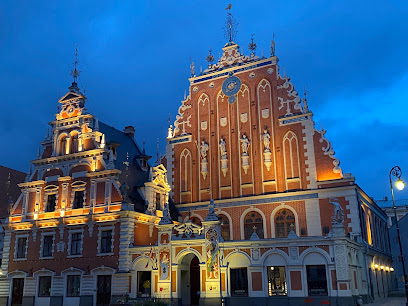
Dome Square
Explore the historical charm of Dome Square in Riga, a vibrant center of culture, beautiful architecture, and rich history waiting to be discovered.
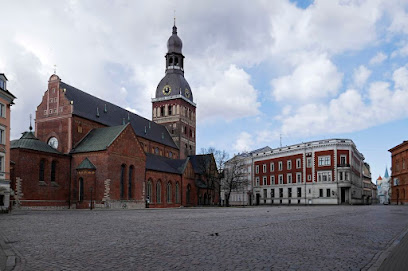
Latvian Academy of Sciences Observation deck
Experience breathtaking panoramic views of Riga from the Latvian Academy of Sciences Observation Deck, a must-visit tourist attraction in the heart of the city.
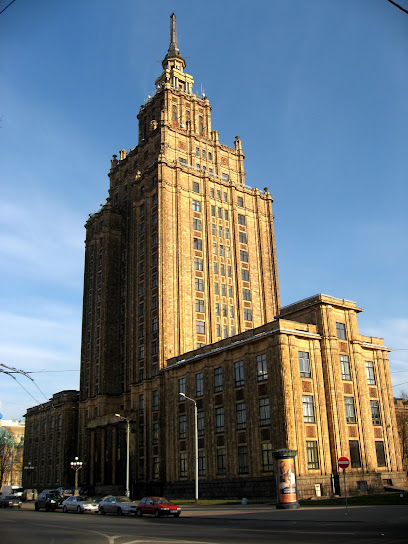
Riga Art Nouveau Center, museum
Explore the stunning Art Nouveau architecture and rich cultural heritage at the Riga Art Nouveau Center, a must-visit museum in Latvia's capital.
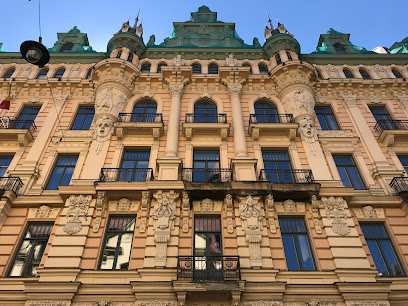
Art Nouveau building
Experience the beauty of early 20th-century design at the Art Nouveau Museum in Riga, where history and art converge in stunning elegance.
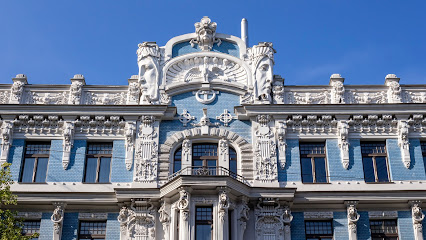
Jugenda Stila Nami, Riga
Discover the exquisite Art Nouveau architecture of Jugenda Stila Nami in Riga, Latvia, a treasure trove of artistic heritage and cultural richness.
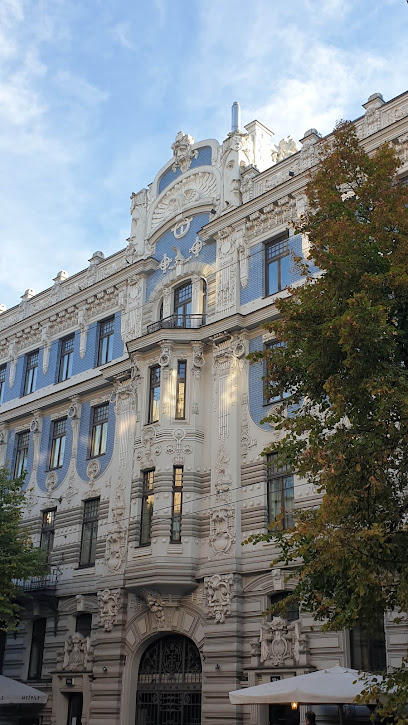
Coats of Arms of Latvian Municipalities Mural (LV100)
Explore the Coats of Arms of Latvian Municipalities Mural in Riga, a vibrant celebration of Latvia's history and diverse culture in a striking visual display.
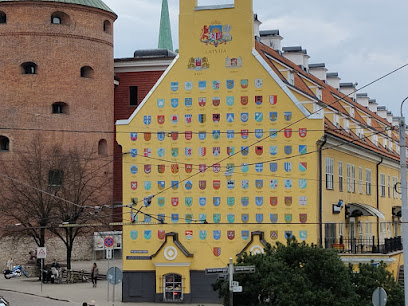
Mirror Snail
Explore the enchanting Mirror Snail in Riga's Central District - a unique artistic installation that reflects beauty and creativity in every angle.
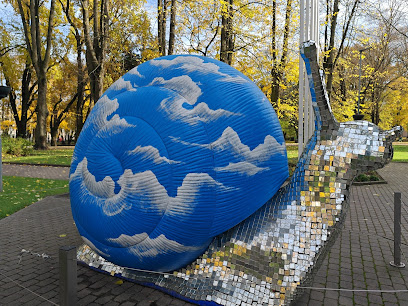
Alberta iela 2a - Jūgendstila ēka
Explore the stunning Jugendstil architecture of Alberta iela 2a in Riga, a masterpiece of early 20th-century design and cultural heritage.
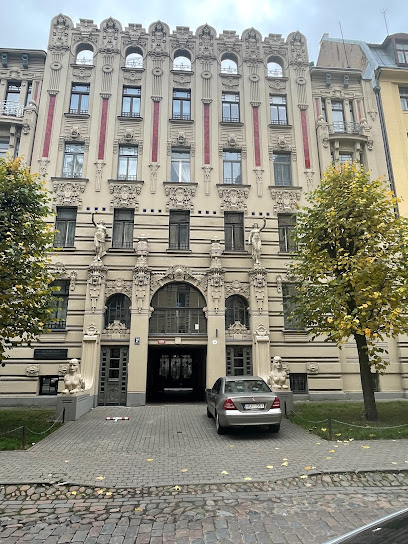
lighthouse
Discover the historic Lighthouse of Riga, a stunning maritime landmark offering breathtaking views and rich cultural insights into Latvia's maritime heritage.

Elizabetes iela 33 - Art Noveau masterpiece
Explore Elizabetes iela 33, a stunning Art Nouveau masterpiece in the heart of Riga, showcasing exquisite architecture and rich cultural history.
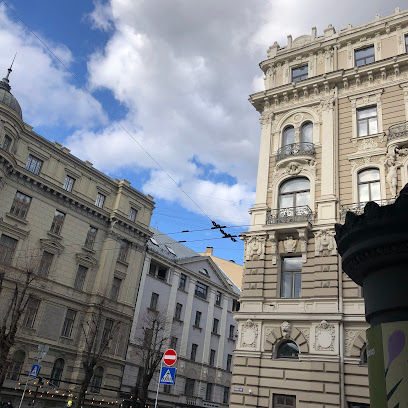
Unmissable attractions to see
Riga Art Nouveau Center, museum
Discover the enchanting world of Art Nouveau at the Riga Art Nouveau Center, a museum showcasing exquisite architecture and decorative arts.
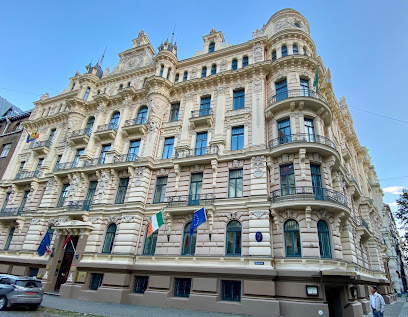
Art Nouveau building
Explore the Art Nouveau masterpiece in Riga, a stunning museum showcasing the elegance of early 20th-century architecture and design.

Jugenda Stila Nami, Riga
Discover the enchanting Art Nouveau architecture at Jugenda Stila Nami in Riga, a cultural gem showcasing stunning design and historical significance.
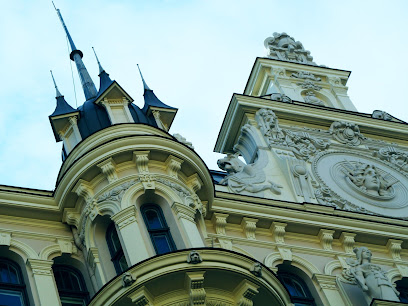
Chinese Pagoda
Discover the cultural beauty of the Chinese Pagoda in Riga's Kronvalda Parks, a serene escape that offers peace and stunning architectural allure.
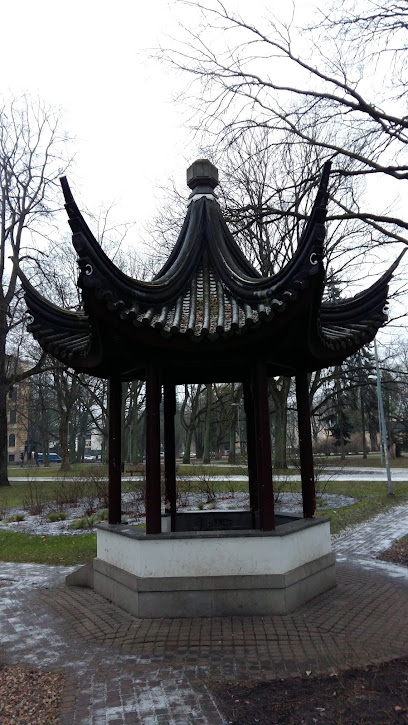
Coats of Arms of Latvian Municipalities Mural (LV100)
Experience the vibrant Coats of Arms of Latvian Municipalities Mural in Riga, showcasing the rich cultural heritage and artistic flair of Latvia.
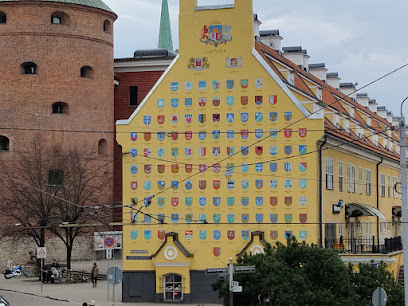
Reconocimiento UNESCO al Centro Histórico de Riga
Explore Riga's Historic Centre, a UNESCO World Heritage site, where medieval charm meets vibrant culture in the heart of Latvia's capital.
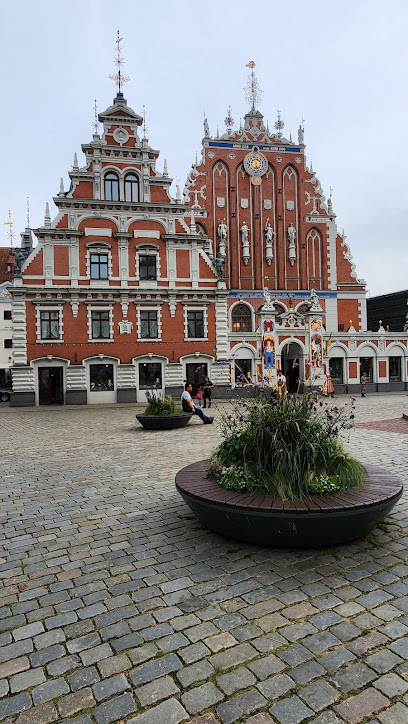
Elizabetes iela 10B
Experience the Art Nouveau elegance of Elizabetes iela 10B in Riga, a must-see architectural gem that embodies Latvia's rich cultural heritage.
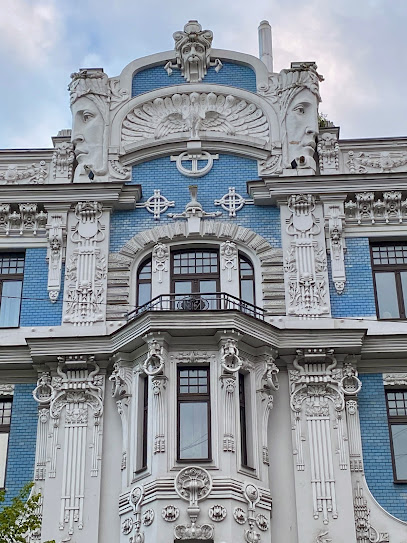
Alberta iela 2a - Jūgendstila ēka
Explore the enchanting Jugendstila architecture of Alberta iela 2a in Riga, a stunning showcase of Art Nouveau design and history.
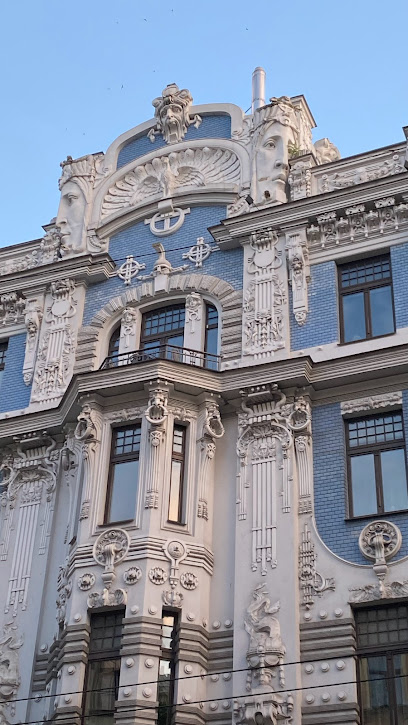
Elizabetes iela 33 - Art Noveau masterpiece
Discover the stunning Art Nouveau masterpiece at Elizabetes iela 33, a must-visit architectural gem in the heart of Riga, Latvia.
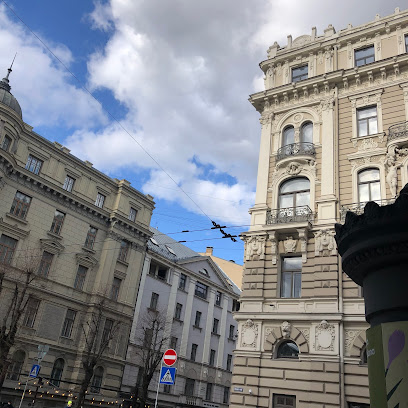
Essential places to dine
Rozengrāls (Vinarium civitatis rigensis)
Experience the unique blend of medieval ambiance and exquisite cuisine at Rozengrāls in Riga.
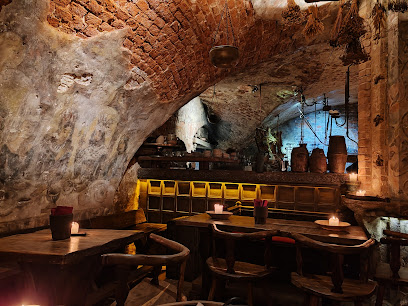
OGLE
Discover Ogle in Riga: A premier restaurant offering exquisite grilled dishes in a vibrant atmosphere.
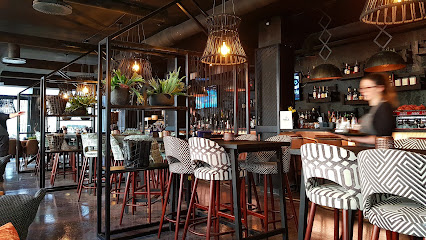
Province restaurant
Experience authentic Latvian cuisine in a family-friendly setting at Province Restaurant in Riga.
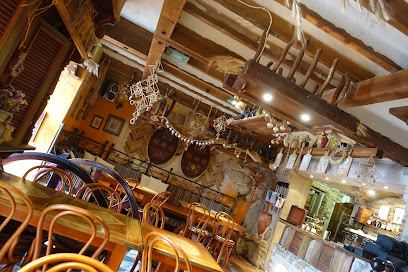
Casa Nostra Italian restaurant
Experience authentic Italian cuisine at Casa Nostra in Riga's Central District—where every meal tells a story.
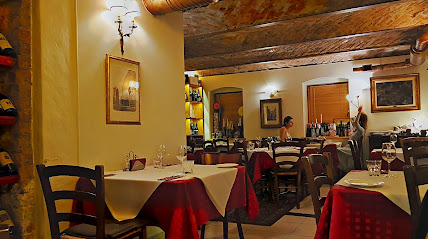
Bon-Vivant the Belgian Beer Cafe
Experience authentic Belgian cuisine and an extensive beer selection at Bon-Vivant Café in Riga's Central District.
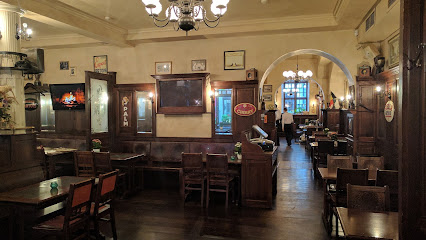
Melnā Bite
Experience modern European cuisine at Melnā Bite in Riga - where local flavors meet contemporary dining.
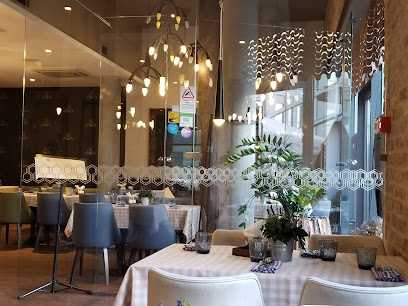
Key to Riga
Experience exquisite dining with a fusion of traditional Latvian cuisine and modern culinary artistry at Key to Riga.
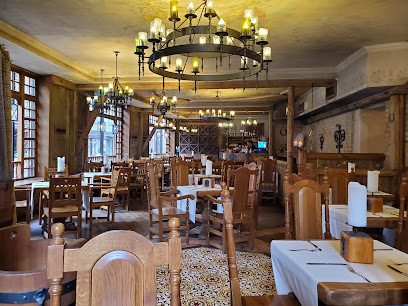
Kolonade. Our Stories...
Experience culinary artistry at Kolonade in Riga, where every dish tells a story of flavor and tradition.
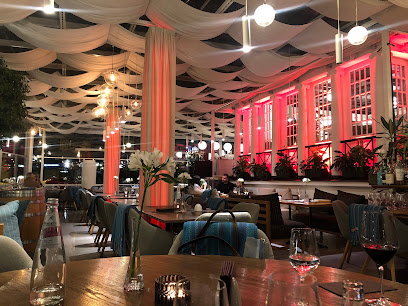
Locale Restaurant
Discover exquisite dining at Locale Restaurant in Riga - where local flavors meet international flair in a vibrant atmosphere.
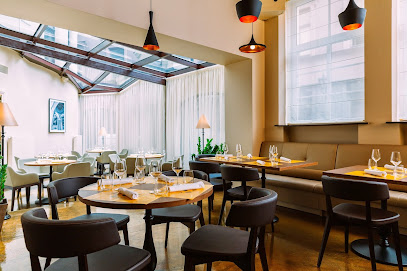
Entresol
Experience fine dining at Entresol in Riga - where local flavors meet international culinary artistry.
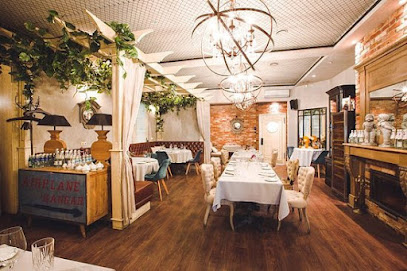
Beef Room Riga
Experience the best of Latvian cuisine at Beef Room Riga, where exquisite meat dishes meet modern culinary artistry in a cozy setting.
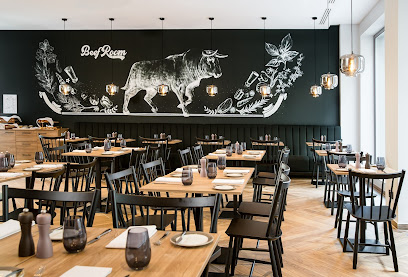
Essential bars & hidden hideouts
Skyline bar
Discover the elegance of Skyline Bar in Riga, where exquisite cocktails meet breathtaking city views for an unforgettable night out.
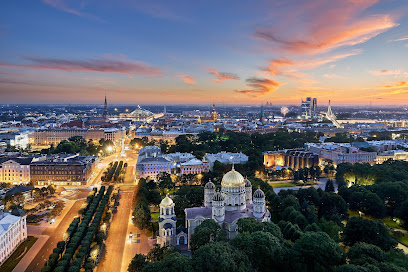
The Armoury Bar
Discover The Armoury Bar in Riga, where historical artifacts meet a vibrant drinking atmosphere, creating a unique experience for tourists.
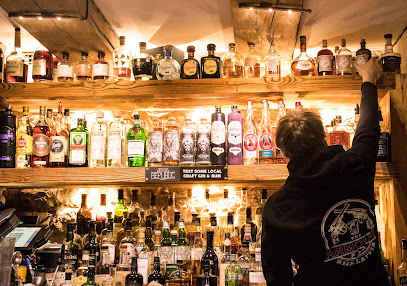
Art Nouveau building
Explore the Art Nouveau museum in Riga, showcasing stunning architecture and rich cultural history through beautifully preserved exhibits.
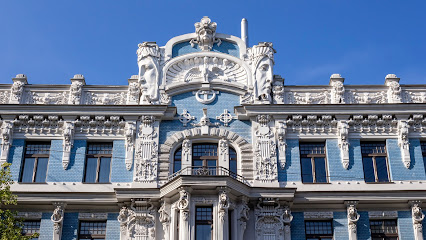
Buberts
Experience the best of Riga at Buberts, where culinary creativity meets a warm, inviting atmosphere for every traveler.
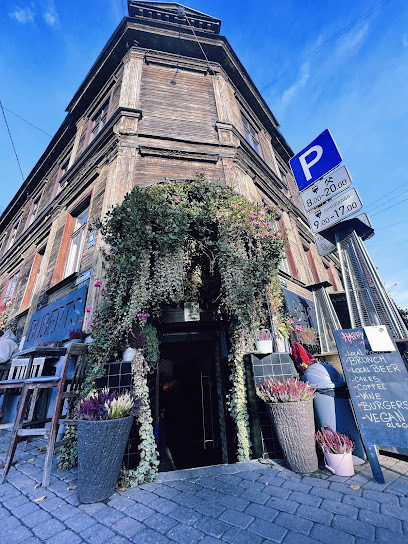
CARTEL Bar
Discover the lively CARTEL Bar in Riga, a must-visit spot blending vibrant nightlife with a welcoming atmosphere and exceptional drinks.
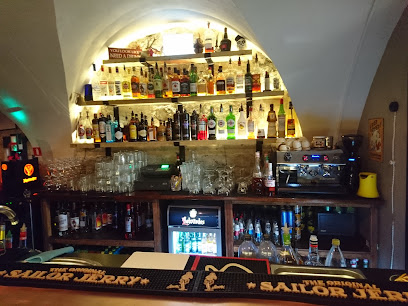
CLOUD NINE
Discover Cloud Nine, Riga's premier cocktail bar, where exquisite drinks meet a vibrant atmosphere for an unforgettable nightlife experience.
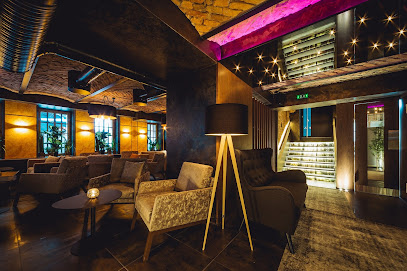
Secret event
Discover the heart of Riga's nightlife at Secret Event Bar, a lively hub for live music, craft beers, and unforgettable experiences.
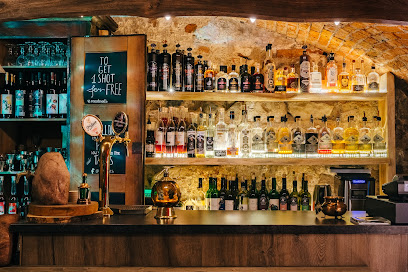
Cynic Bar
Experience the vibrant nightlife at Cynic Bar in Riga, where creative cocktails and a lively atmosphere await every visitor.
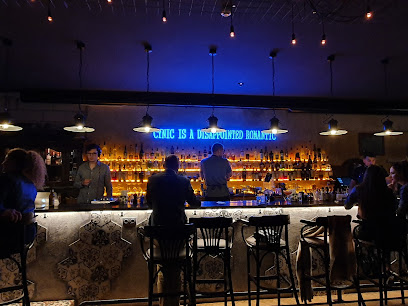
Distillers Republic -Local Craft Distillery & Bar
Experience the essence of Latvia at Distillers Republic, a local craft distillery and bar in the heart of Riga with unique spirits and vibrant ambiance.
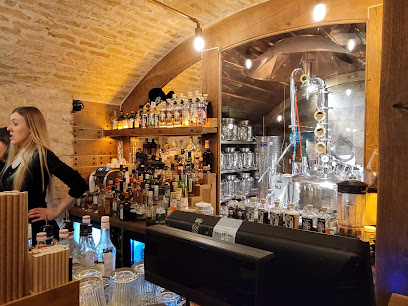
DM Bar Riga
Discover DM Bar Riga: the perfect spot for innovative cocktails and vibrant nightlife in the heart of the city.
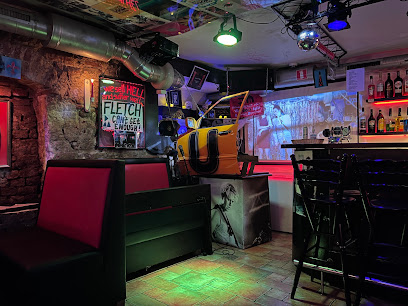
Bar XIII
Experience the vibrant nightlife of Riga at Bar XIII, where unique cocktails and a lively atmosphere await.
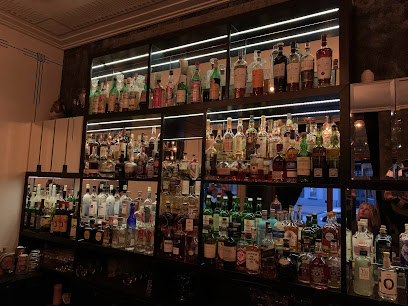
Art Nouveau Rīga / Jūgendstila paviljons
Discover the artistic heritage of Rīga at Art Nouveau Rīga, a boutique celebrating the elegance of early 20th-century design and craftsmanship.

Bar Six
Experience the vibrant nightlife of Riga at Bar Six, a cocktail bar renowned for its creative drinks and inviting atmosphere.
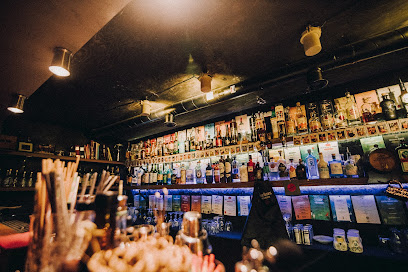
Local Phrases
-
- HelloSveiki
[svay-kee] - GoodbyeUz redzēšanos
[ooz rehd-zay-sha-nohs] - YesJā
[yah] - NoNē
[neh] - Please/You're welcomeLūdzu
[loo-dzoo] - Thank youPaldies
[pahl-dyehs] - Excuse me/SorryAtvainojiet
[aht-vah-ee-noh-yet] - How are you?Kā jums klājas?
[kah yooms kla-yaas] - Fine. And you?Labi. Un jums?
[lah-bee oon yooms] - Do you speak English?Vai jūs runājat angļu valodā?
[vy yoos roo-naa-yat ahng-loo vah-loh-da] - I don't understandEs nesaprotu
[ess neh-sah-proh-too]
- HelloSveiki
-
- I'd like to see the menu, pleaseEs vēlētos redzēt ēdienkarti, lūdzu
[ess vay-lay-tohs rehd-zayt eh-dye-en-kahr-tee, loo-dzoo] - I don't eat meatEs neēdu gaļu
[ess neh-ay-doo gah-loo] - Cheers!Priekā!
[pree-eh-kah] - I would like to pay, pleaseEs vēlētos samaksāt, lūdzu
[ess vay-lay-tohs sah-mahk-saat, loo-dzoo]
- I'd like to see the menu, pleaseEs vēlētos redzēt ēdienkarti, lūdzu
-
- Help!Palīdzība!
[pah-lee-dzee-bah] - Go away!Iziet prom!
[ee-zee-yet prohm] - Call the Police!Saukt policiju!
[sowkt poh-lee-tsee-yoo] - Call a doctor!Saukt ārstu!
[sowkt ahr-stoo] - I'm lostEs esmu pazudis/pazudusi
[ess ess-moo pah-zoo-dees/pah-zoo-doo-see] - I'm illMan ir slikti
[mahn eer sleek-tee]
- Help!Palīdzība!
-
- I'd like to buy...Es vēlētos nopirkt...
[ess vay-lay-tohs noh-peerkt] - I'm just lookingEs tikai paskatos
[ess tee-kai pah-ska-tohs] - How much is it?Cik tas maksā?
[tsik tahs mahk-saa] - That's too expensiveTas ir pārāk dārgi
[tahs eer paa-raak daahr-gee] - Can you lower the price?Vai jūs varētu pazemināt cenu?
[vy yoos vah-ray-too pah-zeh-meh-naht tseh-noo]
- I'd like to buy...Es vēlētos nopirkt...
-
- What time is it?Cik ir pulkstenis?
[tsik eer poolk-steh-nees] - It's one o'clockIr viens pulkstenis
[eer vee-ehns poolk-steh-nees] - Half past (10)Pus desmit
[poos dehs-meet] - MorningRīts
[reet] - AfternoonPēcpusdiena
[pehch-poo-styeh-nah] - EveningVakars
[vah-kahrs] - YesterdayVakar
[vah-kahr] - TodayŠodien
[shoh-dyehn] - TomorrowRīt
[reet] - 1Viens
[vee-ehns] - 2Divi
[dee-vee] - 3Trīs
[trees] - 4Četri
[cheh-tree] - 5Pieci
[pyeh-tsee] - 6Seši
[seh-shi] - 7Septiņi
[sehp-tee-nyee] - 8Astoņi
[ahs-tuh-nyee] - 9Devīņi
[deh-vee-nyee] - 10Desmit
[dehs-meet]
- What time is it?Cik ir pulkstenis?
-
- Where's a/the...?Kur ir...?
[koor eer] - What's the address?Kāda ir adrese?
[kaa-dah eer ah-dreh-seh] - Can you show me (on the map)?Vai jūs varat man parādīt (uz kartes)?
[vy yoos vah-raht mahn pah-rah-deet oos kahr-tes] - When's the next (bus)?Kad būs nākamais (autobuss)?
[kahd boos nah-kah-mah-ees ow-toh-boos] - A ticket (to ....)Bilete (uz ....)
[bee-leh-teh oos]
- Where's a/the...?Kur ir...?
History of Art Nouveau District
-
The Art Nouveau District in Riga began to take shape in the late 19th century, primarily during the period from 1890 to 1910. This architectural movement emerged in response to the rapid industrialization and urbanization of the city, reflecting a desire for artistic expression and modernity. Riga became a hub for Art Nouveau architecture, influenced by the works of architects such as Mikhail Eisenstein and Konstantīns Pēkšēns, who infused the style with local cultural elements.
-
The early 20th century was a time of cultural flourishing in Riga, as the city established itself as a center for the arts and architecture. The Art Nouveau District is characterized by its ornate facades, intricate detailing, and vibrant motifs that often draw inspiration from nature. This period saw the construction of over 800 buildings in the Art Nouveau style, making Riga one of the largest collections of this architectural style in Europe.
-
Riga's development during the Art Nouveau period was significantly influenced by its status within the Russian Empire. The empire's expansion and modernization efforts led to an influx of wealth and new ideas, allowing architects and artists to experiment with innovative designs. This cultural exchange enriched the local architectural landscape and contributed to the unique character of the Art Nouveau District.
-
The onset of World War I in 1914 brought significant challenges to Riga, including the disruption of construction and the eventual occupation by German forces. After the war, Latvia declared its independence in 1918, and the Art Nouveau District became a symbol of national identity. However, the economic difficulties of the interwar period led to a decline in the maintenance of these historic buildings, which began to show signs of neglect.
-
In the late 20th and early 21st centuries, efforts were made to restore and preserve the Art Nouveau District as part of Latvia's cultural heritage. The area was recognized as a UNESCO World Heritage Site in 2016, highlighting its architectural significance. Today, the Art Nouveau District stands as a testament to Riga's rich history, attracting visitors from around the world who come to admire its beauty and learn about its cultural past.
Art Nouveau District Essentials
-
The Art Nouveau District of Riga is conveniently located within the city center, making it easily accessible from various neighborhoods. From the Old Town (Vecrīga), you can walk to the district in about 15-20 minutes. Alternatively, trams and buses connect other parts of the city to the Art Nouveau District, specifically tram lines 1, 2, and 5, which stop near the popular Alberta and Elizabetes streets.
-
The Art Nouveau District is best explored on foot due to its compact size and pedestrian-friendly streets. Public transport options, including trams and buses, are available if you wish to venture further afield. Additionally, bicycle rentals are offered in the area, allowing you to explore at a leisurely pace while enjoying the surrounding architecture.
-
The Art Nouveau District is generally safe for tourists, with a low crime rate. However, as with any urban area, it is advisable to remain vigilant, especially in crowded places. Areas to avoid at night include certain outskirts of the city center, where incidents of petty crime can occur. Always keep your belongings secure and be cautious when using ATMs.
-
In case of an emergency, dial 112 for police, fire, or medical assistance. The nearest hospital is located in the city center, and pharmacies are widely available for minor health issues. It is recommended to have travel insurance that covers emergencies and to keep important contact numbers handy.
-
Fashion: Do wear comfortable shoes for walking; the district features cobblestone streets. Don't wear overly casual or beach attire when visiting upscale establishments. Religion: Do respect local customs, especially in nearby churches. Public Transport: Do validate your ticket before boarding. Don't engage in loud conversations or disruptive behavior. Greetings: Do greet locals with a friendly 'Labdien' (Good day). Eating & Drinking: Do try local Latvian dishes at cafes. Don't consume alcohol in public spaces outside of licensed establishments.
-
To experience the Art Nouveau District like a local, consider visiting early in the morning when the streets are quieter. Explore the small boutiques and artisan shops hidden within the area. Join a guided walking tour to learn about the architectural history and significance of the buildings. Don't miss the beautiful parks nearby, such as the Viesturdārzs, where locals often relax and enjoy picnics.
Trending Landmarks in Art Nouveau District
-
House of the Black Heads
-
Dome Square
-
Latvian Academy of Sciences Observation deck
-
Riga Art Nouveau Center, museum
-
Art Nouveau building
-
Jugenda Stila Nami, Riga
-
Coats of Arms of Latvian Municipalities Mural (LV100)
-
Mirror Snail
-
Alberta iela 2a - Jūgendstila ēka
-
lighthouse
-
Elizabetes iela 33 - Art Noveau masterpiece
Nearby Cities to Art Nouveau District
-
Things To Do in Jurmala
-
Things To Do in Sigulda
-
Things To Do in Cesis
-
Things To Do in Talsi
-
Things To Do in Šiauliai
-
Things To Do in Kuldiga
-
Things To Do in Panevėžys
-
Things To Do in Valga
-
Things To Do in Ventspils
-
Things To Do in Pärnu
-
Things To Do in Kuressaare
-
Things To Do in Viljandi
-
Things To Do in Utena
-
Things To Do in Daugavpils
-
Things To Do in Liepaja

